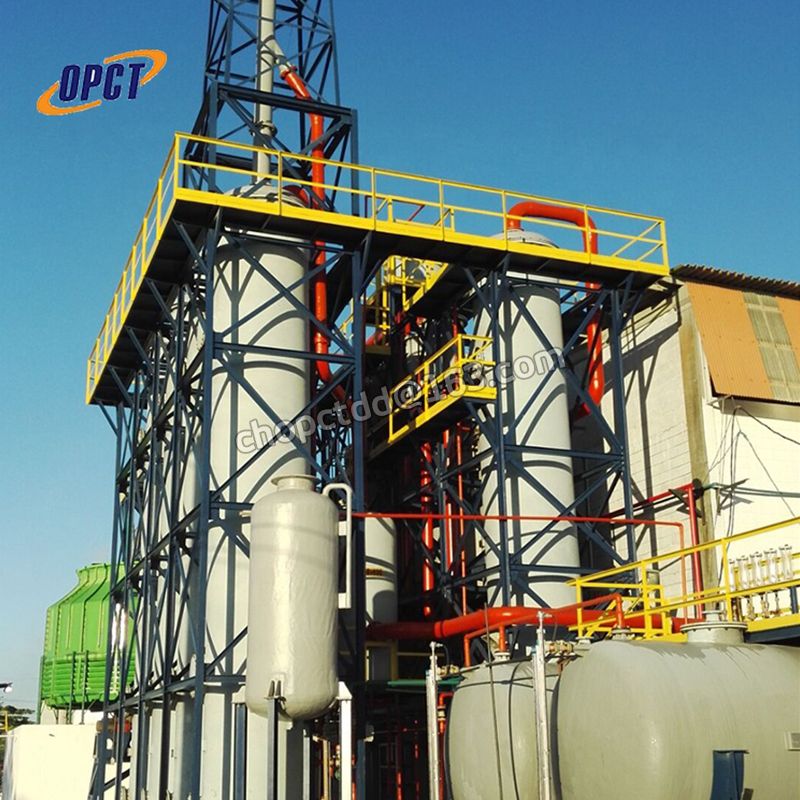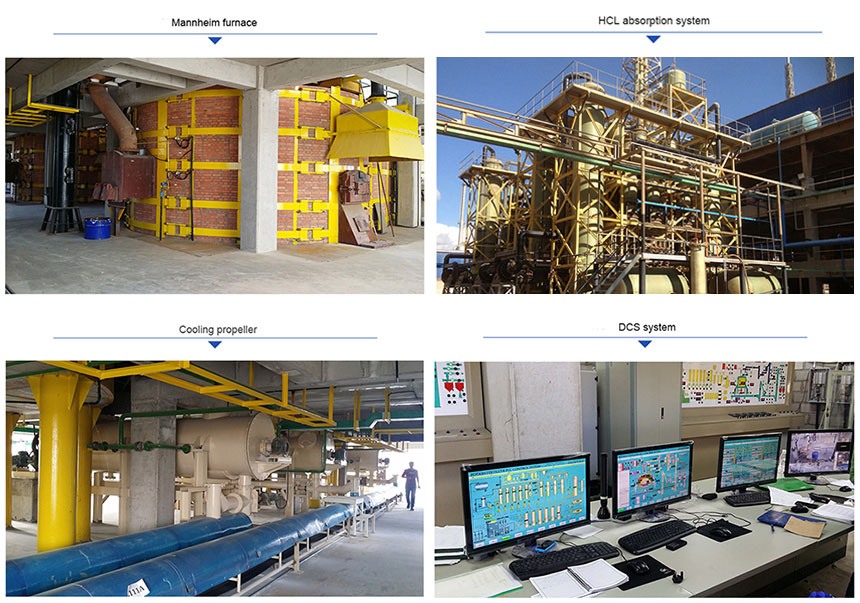K2SO4 Potassium Sulfate Plant Equipment and Machinery
HEBEI DONGDING could provide the complete set of K2SO4 Potassium sulfate plant equipment and machinery which covers every stage.

Chemical advantage
1. Optimized the structure of the reacting furnace witch increased the service time of the furnace.
2. Waste recovery system to recycle hydrochloride acid (HCl) and meet environment requirements
3. Adjusted original HCl absorption system, improved on the quality of the final product.
4. Improved the flue design in the furnace which can make full use of energy and save energy consumption.
5. Used PLC automatic control system to control manufacturing the products, adjust the ratio of feedstock, and saved the labor cost.
Potassium Fertilizers: Muriate of Potash or Sulfate of Potash?
Potassium (K) is an essential nutrient required by plants in large quantities. Potassium does not become part of the many complex organic molecules in the plant. It moves and performs many of its functions as a free ion, such as regulating plant water pressure, activating enzymes, balancing electrical charges, transporting sugars and starches, and more.

Potassium fertilizers are mined from a variety of geologic potassium salt deposits around the world. The salts are processed to remove impurities and converted to a variety of fertilizers. Two of the most popular potassium fertilizers derived from these salt deposits are potassium chloride and potassium sulfate. The term “potash” is a general term that is often used to refer to a variety of potassium fertilizer salts or sometimes more specifically to potassium chloride, the most widely used potassium fertilizer. Potassium chloride is referred to as “muriate (meaning chloride) of potash” or MOP, while potassium sulfate is sometimes called “sulfate of potash” or SOP.
The biggest differences between MOP and SOP are from the anion accompanying the potassium.
Potassium chloride and potassium sulfate have advantages and disadvantages determined by the chemistry of these salts, their behavior in soils, and the nutrients supplied in addition to potassium. Both contain essential nutrients required by all crops. Potassium chloride supplies chloride, the ionic form of the element chlorine and an essential micronutrient. Potassium sulfate supplies plant-available sulfate-sulfur. Both MOP and SOP contain a high potassium percentage (60 or 62 percent as K2O for MOP and 50 percent K2O for SOP). The potassium in both fertilizers is in the same potassium form, and both salts are water soluble, though the water-solubility of potassium sulfate is about one-third that of potassium chloride. Potassium chloride could be dissolved in water for spray or fertigation applications while potassium sulfate would not be suitable for these applications.

The biggest disadvantage of potassium sulfate is cost. Potassium chloride is about 40 to 50 percent less expensive per pound of K2O than SOP. The biggest disadvantage of potassium chloride is its high salt index and chloride content. Potassium sulfate is often preferred over potassium chloride for some chloride-sensitive crops such as potatoes, tobacco, some vegetables and fruits, some tree crops like almonds, walnuts and citrus, although these sensitivities are highly dependent on growing conditions, soil salinity, and salinity and chloride in irrigation water. Some studies show concerns for chloride may be warranted in some situations, but most studies show little if any difference in field performance of these two potassium sources provided sulfur or chloride is not deficient, and provided the total chloride from soil salinity or irrigation water is within the tolerance of the specific crop. For example, potato growers often use SOP as the potassium source because of concerns about chloride sensitivity, even though research indicates negative effects of chloride and an advantage of SOP over MOP are not common. Anecdotal reports of comparisons and grower experience are varied.
Chloride affects plants primarily through increasing osmotic potential of soil water. In other words, chloride salts increase the soil salinity which interferes with a plant’s ability to take up water. Even in chloride-sensitive crops, studies and observations indicate crops respond to the overall increased osmotic potential before chloride reaches toxic levels. To understand if chloride in the fertilizer is a specific concern, one must evaluate total salt loads, potassium rate, and growing conditions.
One can compare the osmotic effect of the two sources by calculating the soil-water salt concentration resulting from applications of MOP or SOP at a given potassium rate and multiplying by the osmotic coefficients for the respective salts. When applied to achieve the same potassium concentration in soil, the osmotic potential of MOP is about 1.3 times the osmotic potential for SOP, but the total salt contribution from either material at practical fertilization rates is still very small. The effect of 100 lbs of MOP per acre (60 pounds of K2O per acre) on the osmotic potential of the soil water is calculated as about 0.1 dS/m, a measure of salinity. To put this in perspective, the salinity threshold at which growth of almond – a sensitive crop – is not impaired is listed as 1.5 dS/m in the saturated soil extract (electrical conductivity of the extract, or ECe, the standard laboratory measure of soil salinity). The threshold ECe for strawberry, carrot, onion, and common bean, other sensitive crops, is 1.0 dS/m. The amount of chloride added with normal fertilizer rates would usually be well below the injurious chloride concentrations published for chloride-sensitive crops. Sensitive crops begin to show leaf injury at 0.1-0.3 percent chloride in the leaf tissue. Therefore, unless the total soluble salt and/or chloride load in the soil or irrigation water is near or above the threshold salinity tolerance for the intended crop, potassium source effects are unlikely to have any practical consequence. Note that low precipitation rates and deficit irrigation can exacerbate salt and chloride toxicity issues. If soil or irrigation water salinity is near or above tolerance thresholds, chloride and salt effects should be managed with potash application rate and timing, possible split applications, maintaining appropriate leaching fractions, and substituting some or all of the MOP with SOP.
Some factors that influence whether potassium chloride use presents a potential risk are:
● ECe (measure of salt concentration) and chemical composition of the irrigation water;
● Total growing-season rainfall;
● Fertilizer application timing in relation to the rainy season and planting or growth of the crop;
● Rate of potassium to be applied and if it will be split into multiple applications; and
● Use of deficit irrigation or irrigation amount plus rainfall less than crop need.




